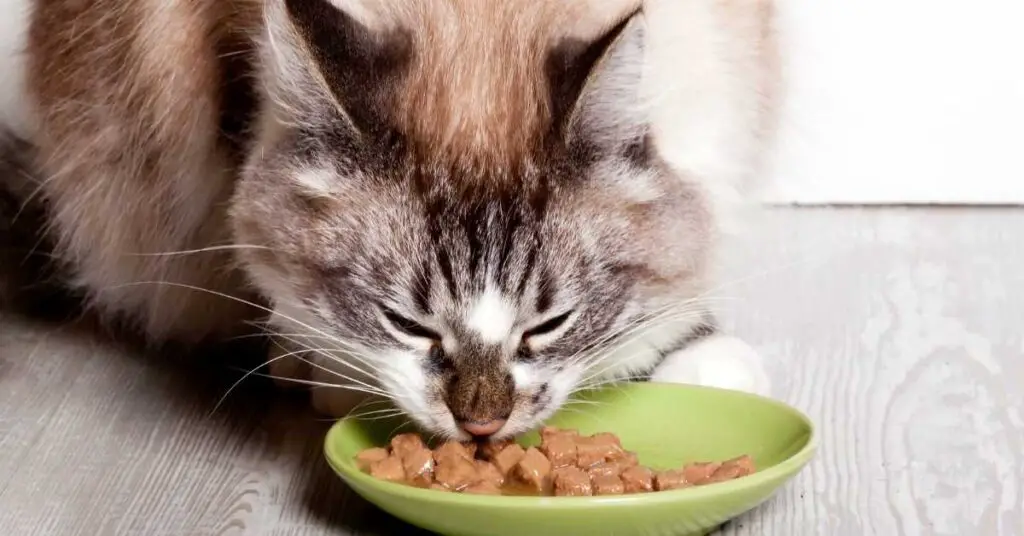Cinnamon is a spice that has been used for centuries in both sweet and savory dishes. It is made from the bark of a tree called Cinnamomum, which is native to Sri Lanka, India, and Bangladesh. Cinnamon has a warm, woody flavor and can be used in baking, as well as in curries and other savory dishes. cinnamon is also known for its medicinal properties, and has been used to treat colds, stomachaches, and other ailments. Today, cinnamon is widely available in supermarkets, and is an essential ingredient in many recipes.
Any responsible pet owner knows that it’s important to do your research before introducing any new food or supplement to your animal’s diet. This is especially true when it comes to common household spices like cinnamon.
While a small amount of cinnamon is unlikely to kill your cat, there are still a few potential risks that you should be aware of. First of all, some cats may be allergic to cinnamon and can experience symptoms like difficulty breathing, swelling, and vomiting. Secondly, the powdery texture of cinnamon can irritate a cat’s lungs if inhaled, potentially leading to an infection. Finally, if your cat ingests too much cinnamon, it can cause digestive issues like upset stomach and diarrhea. For these reasons, it’s best to err on the side of caution and avoid giving your cat any cinnamon-flavored treats.
The dangers of cinnamon for cats
It’s no secret that cats are curious creatures. They like to sniff around and explore their surroundings, which can sometimes lead them into trouble. One household item that may pose a danger to curious cats is cinnamon. While the spice is safe for humans, it can be harmful to cats if they ingest it or come into contact with it.
Cinnamon contains a compound called coumarin, which a cat’s digestive system cannot break down. This can lead to serious problems, including liver failure.
Eating cinnamon in large quantities can also cause vomiting, coughing, and diarrhoea. If you think your cat has come into contact with cinnamon, it’s important to monitor them for any signs of toxicity.
With its sweet smell and warm flavor, cinnamon is a popular ingredient in many dishes. But it’s important to remember that what’s safe for humans isn’t always safe for animals. So next time your cat starts sniffing around the spice rack, be sure to keep them away from the cinnamon.
How do cats get exposed to cinnamon?
Cinnamon is a popular spice that is used in many different dishes. It has a warm, woody flavor that compliments sweet and savory foods alike. While cinnamon can add a delicious flair to any meal, it can also be dangerous for cats.
Cats can be exposed to cinnamon in three ways: ingesting, inhaling, and skin exposure. When cinnamon is ingested, it can cause vomiting, diarrhea, and abdominal pain. Inhaling cinnamon powder can irritate a cat’s lungs and cause difficulty breathing. And finally, when cinnamon comes into contact with a cat’s skin, it can cause redness, swelling, and irritation. If your cat has been exposed to cinnamon in any way, it is important to seek veterinary care immediately.
Symptoms of cinnamon toxity
Cinnamon is a popular spice that is used in many different cuisines. It has a warm, sweet taste that can enhance the flavor of many dishes. However, cinnamon also has a number of potential side effects, especially if it is consumed in large quantities.
Cinnamon can cause diarrhea and low blood sugar, and it can also thin the blood and cause an abnormal heart rate.
In addition, cinnamon can damage the liver and other organs if it is consumed in large amounts.
Cinnamon can also be dangerous if it is inhaled, as it can cause coughing, wheezing, and difficulty breathing.
Finally, cinnamon can irritate the skin, causing redness, itchiness, and burning.
Therefore, it is important to use cinnamon sparingly and avoid consuming large amounts of it to avoid potential health risks.
Will cats recover from exposure to cinnamon?
When it comes to exposure to cinnamon, the answer for cats is a bit of a mixed bag. On the one hand, if your cat has simply had an allergic reaction to the spice, then the chances of recovery are fairly high.
However, if exposure to cinnamon has caused organ failure or other serious respiratory issues, then your vet will likely advise you accordingly. In any case, if you believe that your cat has been exposed to cinnamon, it is always best to seek out veterinary care as soon as possible. Doing so will give your furry friend the best chance at a full and speedy recovery.
Alternatives to using cinnamon if you have pets
When it comes to flavoring your pet’s food, there are plenty of options that are safe and nutritious. While cinnamon can be harmful to pets, turmeric, rosemary, and basil are all great alternatives that your cat or dog will love.
Not only do these spices add flavor to your pet’s diet, but they also offer a variety of health benefits.Turmeric, for example, is a powerful anti-inflammatory that can help to improve joint health. Rosemary is an excellent source of antioxidants, which can help to boost the immune system. And basil is a natural detoxifier that can help to cleanse the liver and kidneys.
So, the next time you’re looking for a way to spice up your pet’s food, reach for one of these healthy alternatives to cinnamon. Your furry friend will be thanking you!
Precautions you should take when using cinnamon around pets
If you must use cinnamon around your pet, make sure to take the following precautions:
-Keep cinnamon out of your cat’s reach by storing it in a cupboard or pantry.
-Avoid using cinnamon in powder form, as this is more likely to be inhaled by your cat.
-Do not allow your cat to eat any foods that contain cinnamon, such as Cinnamon Toast Crunch cereal or cinnamon rolls.
-Wipe up any spills immediately and vacuum thoroughly to remove any lingering cinnamon dust.
Conclusion
While a small amount of cinnamon is unlikely to kill your cat, there are still some risks associated with its use. It’s best to err on the side of caution and avoid giving your cat any cinnamon-flavored treats. If you must use cinnamon around your pet, make sure to take the proper precautions to keep them safe.
FAQS
Is cinnamon bad for cats?
While cinnamon is not necessarily bad for cats, it is best to use it sparingly around them. Cats lack a certain liver enzyme that helps break down cinnamon, so it is not easily digested by them.
What are the symptoms of cinnamon toxicity in cats?
Symptoms of cinnamon toxicity in cats may include vomiting, diarrhea, excessive drooling, coughing, sneezing, difficulty breathing, and changes in behavior. If you suspect your cat has ingested cinnamon and is exhibiting any of these symptoms, it is best to consult with a veterinarian.
Do cats like the smell of cinnamon?
Cats do not generally like the strong smell of cinnamon. Some cat owners even use cinnamon as a natural deterrent to keep cats away from certain areas in their homes.
Is cinnamon essential oil safe for cats?
No, cinnamon essential oil is not safe for cats. The concentrated form of cinnamon can be toxic to cats if ingested or applied to their skin. It is best to keep cinnamon essential oil and other essential oils away from your cat.
Can cinnamon hurt cats?
While small amounts of cinnamon are not likely to cause harm to cats, it is still recommended to keep your cat away from large amounts of cinnamon or cinnamon products to prevent any potential negative effects.
Can a cat get sick if it eats cinnamon?
Ingesting small amounts of cinnamon is unlikely to make a cat sick. However, if a cat eats a large amount of cinnamon or shows any adverse reactions to it, it is best to seek veterinary advice.












